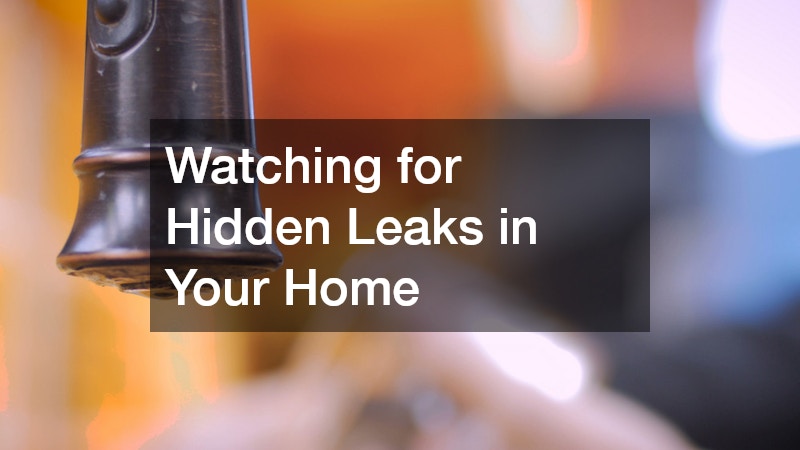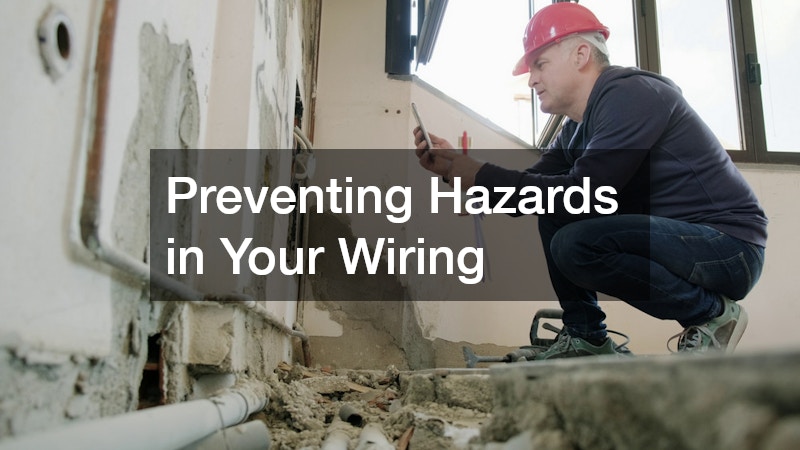Owning a home is a rewarding experience, but it also comes with the responsibility of maintaining it. Often, the most costly repairs are the ones that start as small, almost invisible problems. By the time they become noticeable, the damage is already done, and your wallet takes the hit. Learning to spot hidden repair issues early is one of the most valuable skills a homeowner can develop. It’s not about becoming a professional inspector; it’s about training your eyes and ears to notice the subtle signs that something might be wrong. Whether it’s a strange smell, a faint stain, or a slight dip in a floorboard, early action can save you hundreds or even thousands of dollars. In this blog, we’ll explore common trouble spots throughout your home and the subtle clues that can help you detect problems before they escalate. From the attic to the basement, indoors and out, your home offers plenty of hints when something needs attention. The key is to recognize these signals and address them before they snowball into serious damage. Let’s take a closer look at some of the most common areas where homeowners can catch potential problems before it’s too late.
1. Keeping Your Drainage System in Check
One of the easiest ways to prevent repair issues from exterior water damage is to ensure that rainwater is effectively channeled away from your home. Poor drainage can lead to foundation cracks, basement flooding, and mold growth. Many homeowners overlook their gutters, assuming that as long as water flows off the roof, everything is fine. However, debris buildup, rust, or loose joints can prevent water from flowing properly. Over time, this can cause water to spill over the sides, pooling near the foundation. This standing water can erode soil and weaken structural supports. If you notice peeling paint near the roofline, streak marks, or plant growth inside your gutters, it’s time to investigate. In some cases, a small adjustment or cleaning is all that’s needed, but if you see sagging sections or holes, you might need professional gutter repair to restore full functionality. Early detection is crucial because the cost of repairing water-damaged siding, walls, or floors can be far greater than maintaining the drainage system. Regular seasonal checks, especially after heavy storms, help you spot problems early and keep your home’s exterior in top shape without surprise repair bills sneaking up on you.
2. Watching for Hidden Leaks in Your Home

Water damage inside a home can be subtle at first, but devastating if left unaddressed. Leaks may start behind walls, under floors, or in the ceiling, where they aren’t visible until significant harm has occurred. One of the best ways to detect them early is by paying attention to small signs such as discolored paint, warped baseboards, or musty odors. Dripping sounds when no faucets are on, or sudden spikes in your water bill, can also point to trouble. Even slow leaks can rot wood, weaken structural elements, and create a breeding ground for mold. It’s important to check beneath sinks, around toilets, and near appliances like dishwashers and washing machines for any signs of moisture. If you discover leaks that are beyond a simple tightening of a joint or replacing a washer, you may need a professional plumbing repair to stop the issue before it escalates. Small pipe issues can quickly turn into expensive wall or floor repairs if ignored. Prevention means not just reacting to visible water but proactively searching for the subtle warnings that water might be where it shouldn’t be. This habit can save your home from costly, avoidable damage in the long run.
3. Staying Ahead of Cooling System Problems
Temperature control is essential for comfort, but your home’s cooling system also plays a big role in preventing other problems, such as excess humidity and mold growth. The trouble is that many issues with cooling systems start small and unnoticed. For example, reduced airflow from vents might not seem urgent, but it can signal blockages or failing components. Unusual noises, inconsistent temperatures between rooms, or higher electricity bills during summer months are also early warning signs. Ignoring these can lead to total system breakdowns during the hottest days, when repairs tend to be the most expensive. Keeping an eye on both indoor and outdoor units is vital—look for signs of ice on coils, debris around the condenser, or unusual smells when the system is running. Regular filter changes and annual maintenance help keep things running smoothly, but if you notice any signs of mechanical failure, scheduling air conditioning repairs promptly can save you from bigger, costlier emergencies.
4. Maintaining Your Underground Waste System

Many homeowners don’t think about what happens after wastewater leaves the sink or toilet—until there’s a major problem. Your home’s underground waste system is designed to handle this flow efficiently, but problems can develop quietly over time. Slow drains, foul odors in the yard, unusually lush grass in one area, or gurgling sounds from your plumbing are often signs that something’s wrong beneath the surface. These early indicators should never be ignored, because a failing system can lead to contamination, property damage, and massive repair bills. Regular inspections by professionals can catch minor blockages or mechanical failures before they escalate. If problems are detected, timely septic tank repairs are essential to restore proper function. Even a small leak underground can cause soil erosion, foundation instability, and dangerous bacteria exposure. The key to avoiding big expenses here is vigilance—don’t wait for obvious backups inside your home.
5. Spotting Problems in Your Hot Water Supply
Your water heating system is something you rarely think about—until it stops working. But before that day comes, there are often subtle clues that trouble is brewing. Strange noises like popping or rumbling when the tank is heating, rust-colored water, fluctuating water temperatures, or small puddles around the base of the unit can all signal problems. Mineral buildup inside the tank is a common cause, especially in areas with hard water. If left unchecked, sediment can reduce efficiency and cause overheating, which stresses the tank and shortens its lifespan. Checking your system annually and flushing the tank as recommended can greatly extend its life. When problems do arise, prompt water heater repairs can prevent a total breakdown and avoid the high cost of emergency replacement. Even a small leak should be addressed immediately, as it can damage surrounding flooring, walls, and insulation.
6. Protecting Your Home From Above

The roof is one of the most important parts of your home’s defense against the elements, but it’s also an area where small problems can go unnoticed until they cause serious damage. Missing shingles, cracked flashing, or small leaks can allow water to penetrate the structure, leading to rot, mold, and insulation damage. Even tiny gaps can let in pests, which bring their own set of issues. Homeowners should inspect their roofs from the ground regularly and after severe weather, looking for any irregularities in shape, color, or texture. Inside the home, brown spots on the ceiling or walls can be telltale signs that water is finding its way in. Addressing these repair issues early through professional roof repairs can prevent the much larger expense of structural restoration or complete roof replacement. It’s worth remembering that water damage from a neglected roof can extend far beyond the attic, affecting walls, floors, and electrical systems.
7. Monitoring Walkways and Outdoor Surfaces
Outdoor walkways are easy to overlook, especially when you’re focused on the inside of your home. However, cracks, uneven slabs, or loose bricks can present more than just a tripping hazard. They can also indicate underlying soil movement, drainage problems, or tree root intrusion. If left unaddressed, these issues can worsen, making repairs more complex and expensive. Small cracks may expand during freeze-thaw cycles, while uneven sections can cause water to pool and accelerate deterioration. Regularly walking your property and noting any changes can help you spot trouble early. In cases where sections are sinking or lifting, timely sidewalk repair can prevent the need for full replacement. It also helps maintain your home’s curb appeal and resale value. Keeping these surfaces in good condition isn’t just about aesthetics or safety—it’s about preventing small, manageable fixes from becoming large, budget-busting projects.
8. Preventing Hazards in Your Wiring

Electrical systems are one of the most critical yet dangerous parts of a home when something goes wrong. Many wiring problems develop silently, hidden behind walls, until they cause a short circuit, power outage, or even a fire. Early warning signs can include flickering lights, outlets that feel warm to the touch, circuit breakers that trip frequently, or a faint burning smell. Rodents chewing on wires can also create unseen hazards. If you notice any of these signs, it’s important to act quickly. Professional electrical repairs can address the problem before it escalates into a safety emergency. Attempting DIY fixes without proper knowledge can be dangerous and may even violate local building codes. By having your system inspected periodically, you can catch problems like outdated wiring, overloaded circuits, or damaged connections early. These preventative measures don’t just protect your home—they safeguard your family’s safety as well. Remember that while an electrical issue might not be visible, the risks it poses are very real and can be far more costly than routine maintenance if ignored. Treating your wiring system as a priority is a smart investment in your home’s long-term stability.
9. Caring for Your Lawn’s Lifeline
An irrigation system is a convenient way to keep your yard looking lush, but it can also develop repair issues that aren’t obvious right away. Underground leaks, misaligned sprinkler heads, or malfunctioning timers can waste water, damage landscaping, and even contribute to foundation issues if excess water pools near your home. Keep an eye out for soggy patches of lawn, areas that remain dry despite regular watering, or unusually high water bills. Over time, these signs can point to damage in your system’s components. If you notice uneven watering patterns or pressure loss, you may need professional sprinkler repairs to restore optimal performance. Regular system checks, especially before and after each watering season, can prevent small issues from turning into costly overhauls. Maintaining your irrigation system not only keeps your yard healthy but also helps avoid water-related damage to your property. A well-tuned sprinkler setup is more efficient, saving both money and resources. By giving attention to this often-overlooked system, you protect both the beauty and structural health of your home, staying ahead of potential repair issues that could otherwise go unnoticed.
10. Preserving Your Home’s Exterior Walls
The outer walls of your home do more than define its shape—they protect the interior from wind, rain, and pests. Over time, weather exposure can cause cracking, warping, or gaps that let moisture and insects in. These changes may seem minor at first, but they can lead to serious structural problems if ignored. Fading paint, loose panels, or swelling boards are all signs of repair issues, and that maintenance is needed. Regularly walking around your home’s perimeter and inspecting the walls can help you catch these problems early. When damage is found, timely siding repairs can prevent water infiltration, insulation damage, and pest infestations. Maintaining your siding not only protects your investment but also enhances curb appeal, which is important if you ever plan to sell. The cost of addressing a small section of damaged siding is far less than repairing widespread rot or replacing entire walls. Like many other parts of your home, the key to avoiding costly repairs here is vigilance—spotting small changes and acting quickly before they develop into major repair issues that affect the integrity of your entire property.
Your home will always require care and attention, but that doesn’t mean you have to face endless expensive surprises. By learning to spot early warning signs in each major area—drainage, plumbing, cooling, waste systems, heating, roofing, walkways, wiring, irrigation, and exterior walls—you can prevent many problems from spiraling out of control. The common theme across all these areas is vigilance and action. Repair issues rarely appear overnight; they grow quietly until they demand attention. If you develop the habit of inspecting your home regularly, listening for unusual sounds, watching for subtle changes, and addressing problems as soon as they appear, you’ll save yourself both stress and money.



